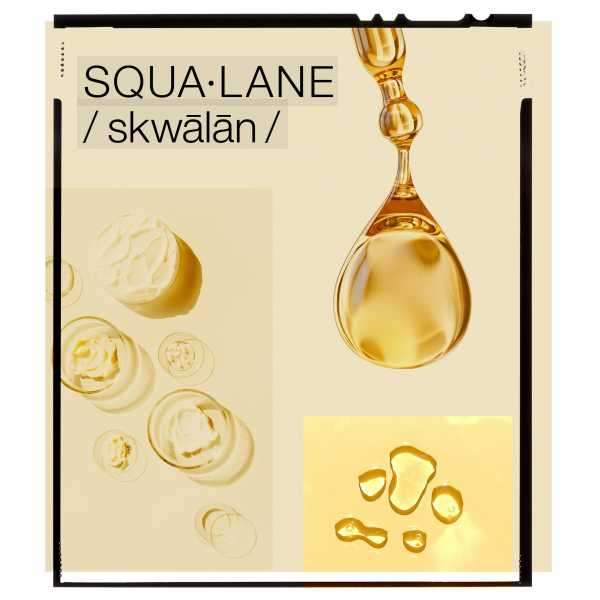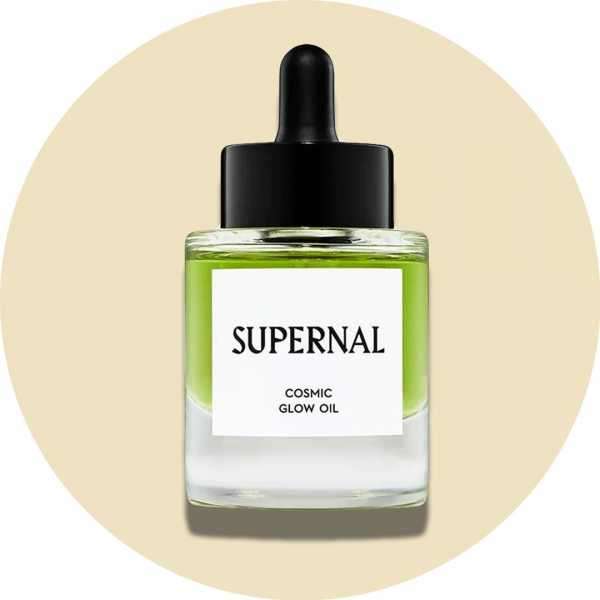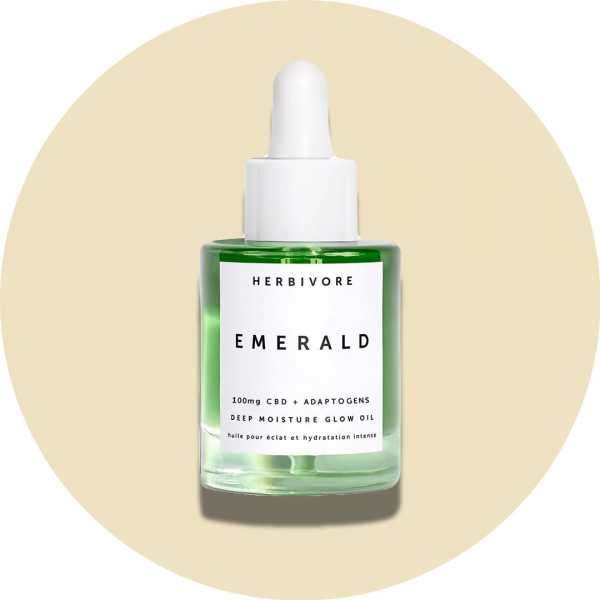It’s skin’s favorite moisturizing ingredient.

Getty Images, Perri Tomkiewicz
In the world of skincare ingredients, squalane has quickly gone from under-the-radar to everywhere. It’s celebrated for its healing, moisturizing magic, and it’s referenced in clean beauty conversations. But what, exactly, is squalane? And what do you need to know to best utilize its hydrating potential on your own skin, hair, and body? We speak to key experts—from biochemists and international ingredient specialists to dermatologists and aestheticians—to get the lowdown on the latest skincare hero. Here’s what you need to know about this white-hot ingredient.
What Is Squalane?
To truly understand squalane means to first understand squalene—with an E. Squalene is a molecule we are born with in abundance, but like the hyaluronic acid molecule, squalene amounts decrease as we age. It is a main component in sebum, the oily, waxy substance produced by the body’s sebaceous glands that moisturizes and protects our skin. Sebum is essential to protecting the skin barrier, helps to prevent water loss, and can also provide anti-inflammatory, antibacterial, and antioxidant benefits.
“It is kind of like baby’s first moisturizer,” explains Mimi Lu, the scientist behind Rosie Huntington-Whiteley’s clean beauty brand, Rose Inc, which uses squalane in every product, from its pomegranate-infused exfoliating cleanser to the full range of makeup. “We see the benefits of squalene from birth all the way to as you get older,” Lu says. That being said, “Of course, like with other things, squalene starts to diminish [with age].”

Cosmic Glow Oil
Supernal
credobeauty.com
$108.00
This face oil is, frankly, heaven. Merging aromatherapy with vitamin C; omegas 3, 6, and 9; and, yes, squalane, the oil gently seals in moisturizer and serum without clogging pores, leaving a noticeable afterglow.
Enter squalane—with an A. Squalane is a more stable version of this natural emollient. It is biomimetic, meaning it mimics the function of a natural substance (in this case, sebum). “If you think about emollients in moisturizers, it’s probably one of the best ones you can use for skincare, because skin already recognizes it and knows what it does,” says Ramya Viswanathan, a lead chemist at Amyris, the biotechnology and renewable cosmetics company behind brands including Biossance, JVN, and Rose Inc. “It’s really replenishing and feeding what the skin might be missing.”
While squalane is currently enjoying a moment in the spotlight, it’s even more popular than you may have realized. “Squalane is widely used across hundreds of brands,” Viswanathan says. However, they are now bringing more attention to it in their formulas as customers have become more aware its benefits. “No one was calling it out before, but a lot of brands do use it just because it feels so amazing and it’s very beneficial for the skin,” Viswanathan adds.
Where Does Squalane Come From?
Squalene and squalane can be developed in several ways. Historically, squalene was derived from the livers of sharks. (Yes, really.) Sharks are unique in that they naturally have extra fat in their livers to maintain buoyancy in deep waters. The main ingredient in shark liver oil? Squalene. Currently, approximately six million sharks are killed annually for their livers, with around 3,000 sharks required to make one ton of squalene. This method has biodiversity consequences and obvious ethical concerns.

Herbivore Botanicals
Herbivore Botanicals
nordstrom.com
$58.00
This CBD + adaptogens oil, also infused with squalane, is lightweight and perfect for dry, stressed-out skin. It also comes in a fun Mary Jane–inspired shade, with a scent to match.
Luckily, there are other, plant-based ways to produce squalane. Amyris, for instance, develops their vegan squalane from sugarcane fermentation in Brazil, grown far from the Amazon rainforest so there is no deforestation. This substitution saves the lives of two million sharks a year. Not to mention, the ingredient is just as effective. “It’s a molecular match to the moisture in our own skin, and absorbs 10 times faster than other plant-derived oils, and pairs well with other ingredients,” says Catherine Gore, president of Biossance (and previously the brain behind Marc Jacobs Beauty) of the group’s sugarcane-grounded biotechnology. “It’s the perfect vehicle to use in formulating, because it actually helps other ingredients perform better and penetrate more deeply into the skin.”
Sugarcane-derived squalane is a particularly stable form of plant squalane. It can also be sourced from olive oil, amaranth seeds, rice bran, wheat germ, date palm, and even some fungi.
Source: www.harpersbazaar.com




